Dogs are basically part of the family. They are also known for their loyalty and natural instincts to protect every member of their pack. However, not all dogs have strong instincts for protection, as some are only watchdogs and don’t really strongly respond when it comes to personal security itself. That’s why you will still need to train them as young as they are to be able to incorporate and hone those protective instincts. Leaving the professionals to do the training is advisable as they are skilled and have knowledge about different techniques in training your fur friend to be a guard dog. But there are still ways you can consider doing in order to train your dog for personal security.
To know more about how you can train your dog for personal security, stay with us because we will be listing down tips for you.
1. Train Your Dog to Respond to Obedience Commands
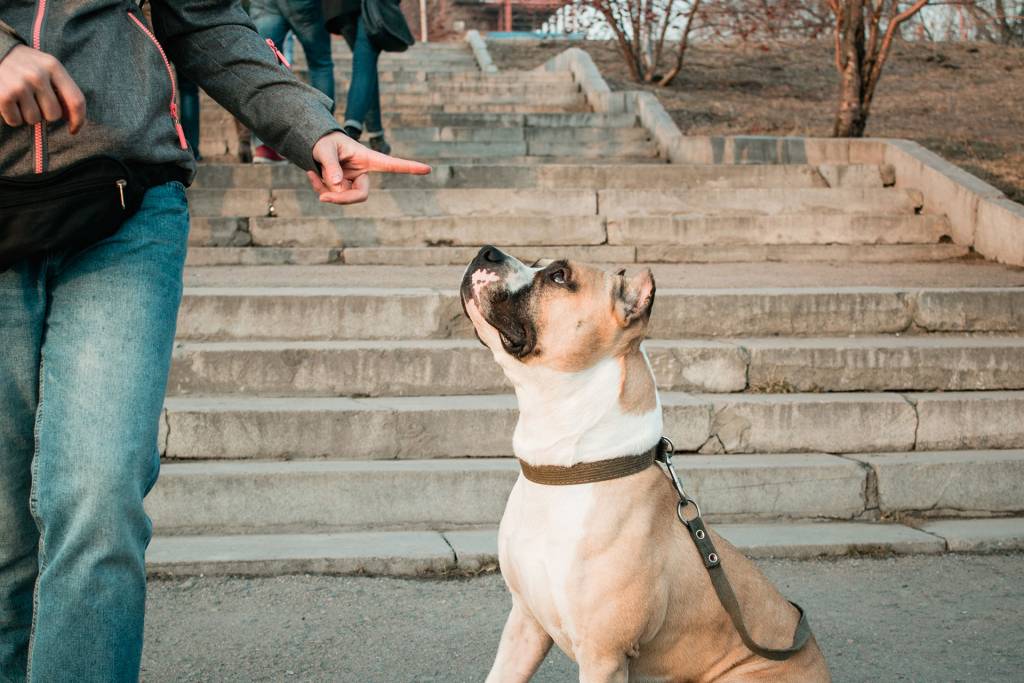
Training dogs to respond to obedience commands is essential, especially while they are at a young age. Your dog should know how to respond to commands such as, sit, lie down, stay, no, leave it, go, etc. each time you give it to them. Along with verbal commands, you should also train your dog to know how to recognize and respond to hand signals. Hand signals help improve your communication with them. Pairing verbal commands with hand signals will enable them to respond better.
Take note that you have to be consistent in teaching them these commands in order for them to fully understand what they are for. If you fail to be consistent in doing this basic training of obedience, then it will be hard for you to train your dog to follow commands and be equipped for personal security.
2. Don’t Miss Out on Socializing Your Dog
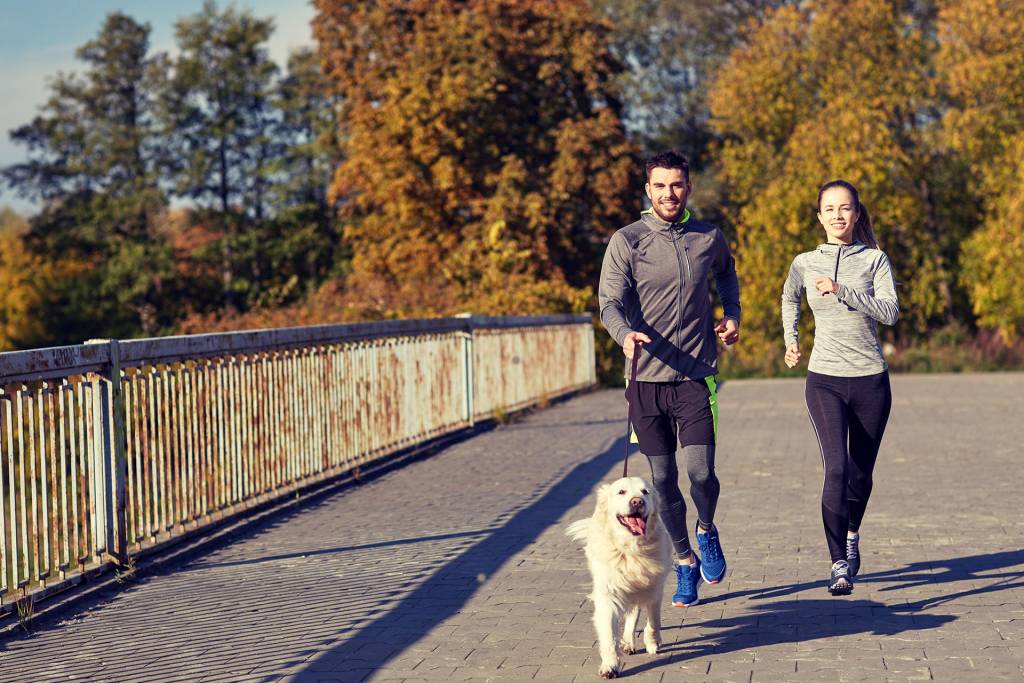
Dogs that don’t often get socialized wouldn’t know how to properly respond to different situations. They will remain indifferent and unfamiliar with a lot of things. You might be wondering, “why the need for socialization if you are training the dog for personal security?” You are training the dog for personal security and to become a guard dog, but that doesn’t mean you are going to keep them inside the house just so they will remain skeptical with strangers.
Socializing with your dog at an early age will enable him/her to not fear unfamiliar situations. In fact, taking them out for walks and letting them socialize with people and other animals will enable them to distinguish which is a threat situation and which is not. Doing this will also help them get better acquainted with daily activities outside of your home and heighten their senses for things.
3. Teach Your Dog to Bark on Command
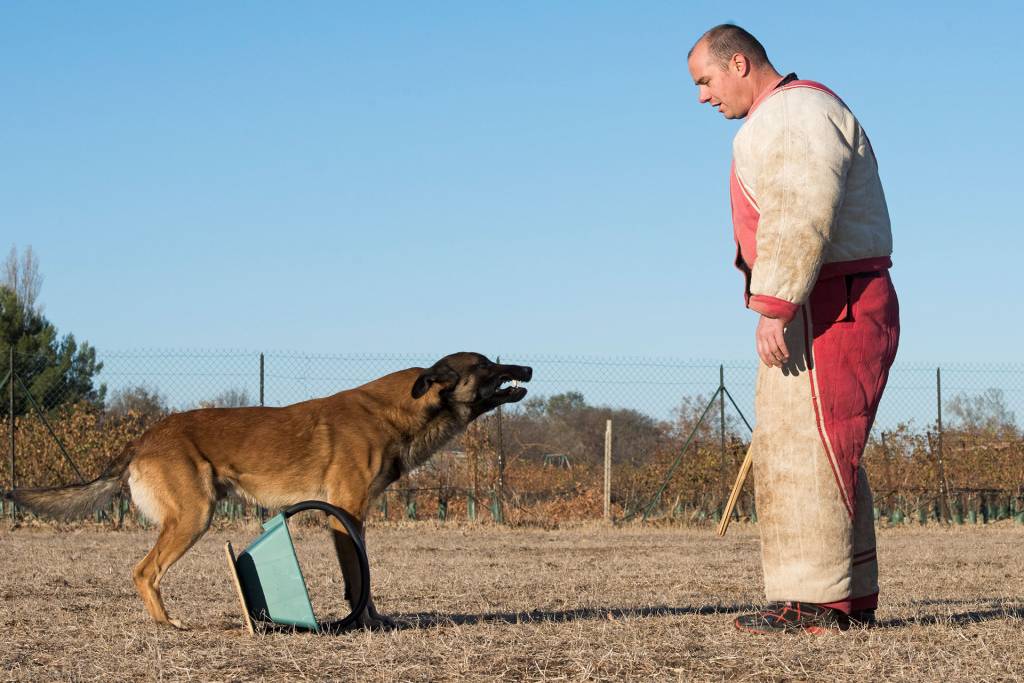
Barking is a common response for a lot of dogs, especially when they are excited, agitated, or basically anything that has something to with intensifying their emotions. Despite this case, you can still train your dog to bark on command. What do we mean by this? You can train them to bark on command by marking the behavior with a command like, “speak.” Do this as soon as your dog barks and reward them with a treat, a chew toy, or even praise, so they can easily associate with that behavior. You can also teach your dog to stop barking by telling them to sit. If they still don’t respond to that command and keep barking, then you can tell them “down.” Make sure as well that your commands are well understood by your dog.
Dogs who bark at strangers are actually a good sign and as long as they don’t attack or do something aggressive without your command, then it is practically fine. It just means that they feel protective over you, which is good as well because you can train them for personal security. A dog that doesn’t bark at strangers and leaves no care about its surroundings is not a good candidate for personal security and is more suitable as a companion dog rather than a guard dog.
4. Familiarize Your Dog with Members of the Family
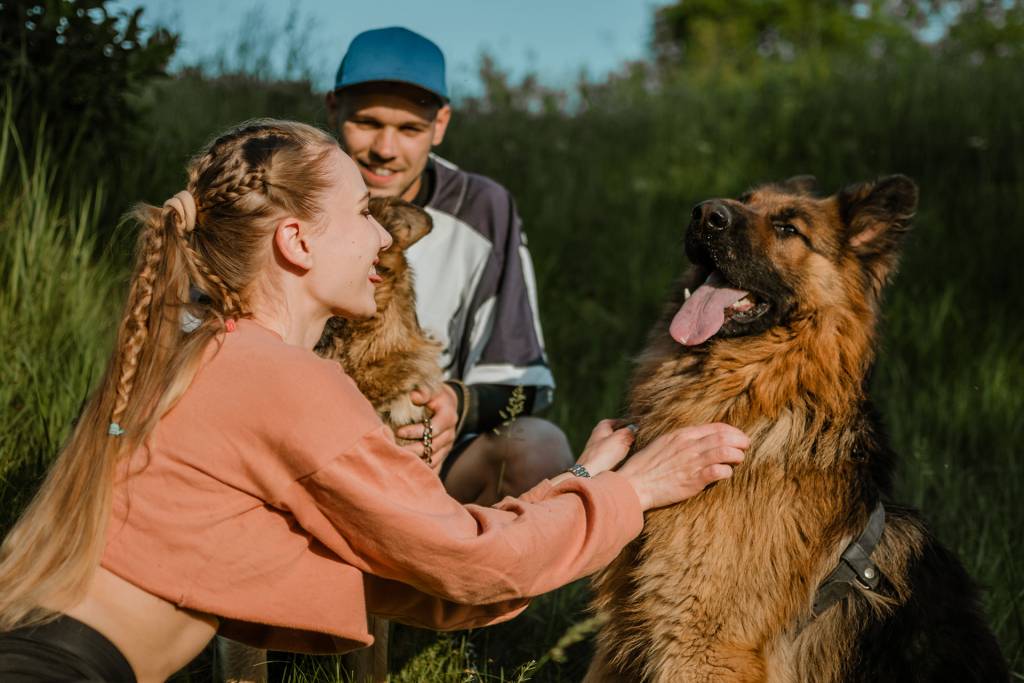
Training your dog for personal security will require them to get familiar with the members of the family, including other pets. That’s why it is important to allow the adults as well as the kids in the family to personally interact with the dog. This will help the dog recognize each member better and see them as people who are not a threat, rather a part of the pack that they need to protect.
In the event that you don’t have other pets at home, then you can train your dog to socialize with other dogs or pets, so they don’t grow weary when other animals are around.
5. Train Your Dog to Defend You
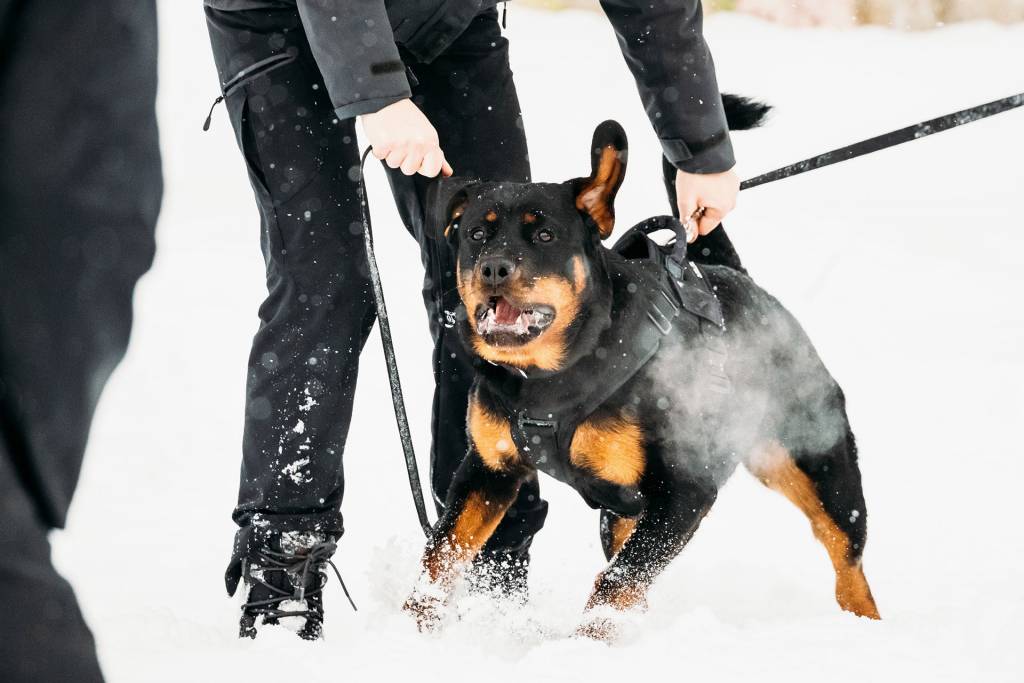
Teach your dog to guard you and wait only for a specific time to attack. Most people would think that training your dog to defend you would mean that they need to attack at once, but it is actually the other way around. Instead, dogs are trained for non-confrontational techniques. These techniques enable them to know how to respond when a real threat arises. They will know how to stand guard and be still until the right opportunity to act comes.
Training your dog for personal security doesn’t mean you are going to raise them in an aggressive manner to ensure that they grow protective. Do bear in mind that you are training them to protect, and not to attack anyone they see that seems suspicious. It is still best to partner that training with a loving environment where they are also able to feel welcomed. Your training will simply be more effective if your dog develops a great sense of loyalty over time, as they will adhere even more to those training.
6. Make Training Fun for Your Dog
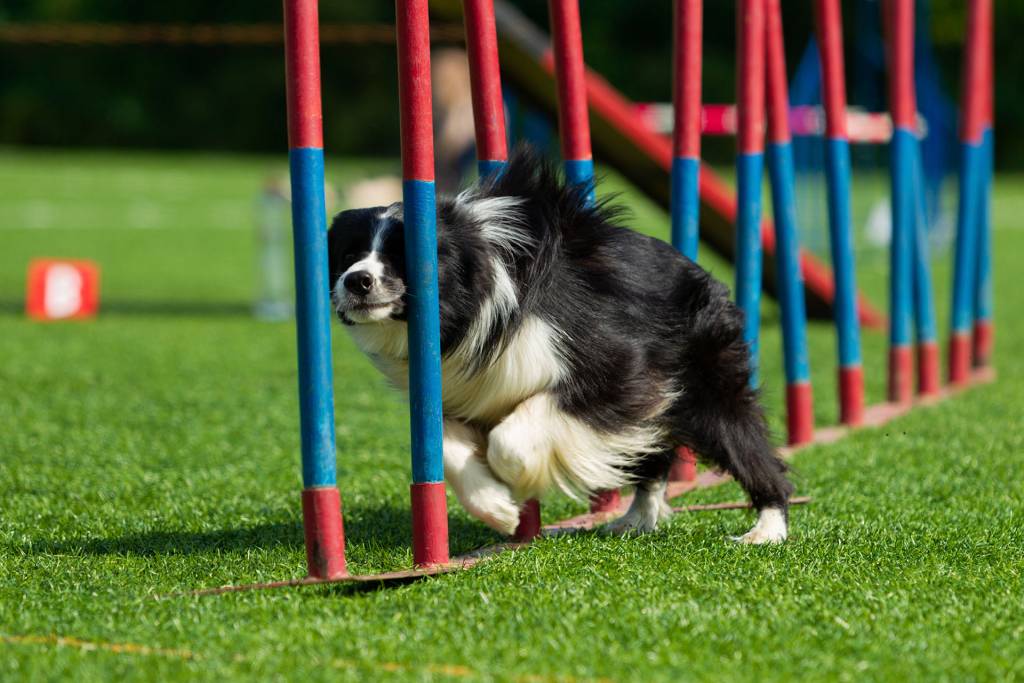
Make training fun for your dog and play their favorite game. You can do this either before or after the training. Along with playing their favorite game, it will also help make things fun and exciting for your dog if you will give them some treats. This will make them feel rewarded for being obedient and cooperative during the training. They will respond positively to that experience and will look forward to the next training sessions.
7. Be Consistent With Your Tone of Voice
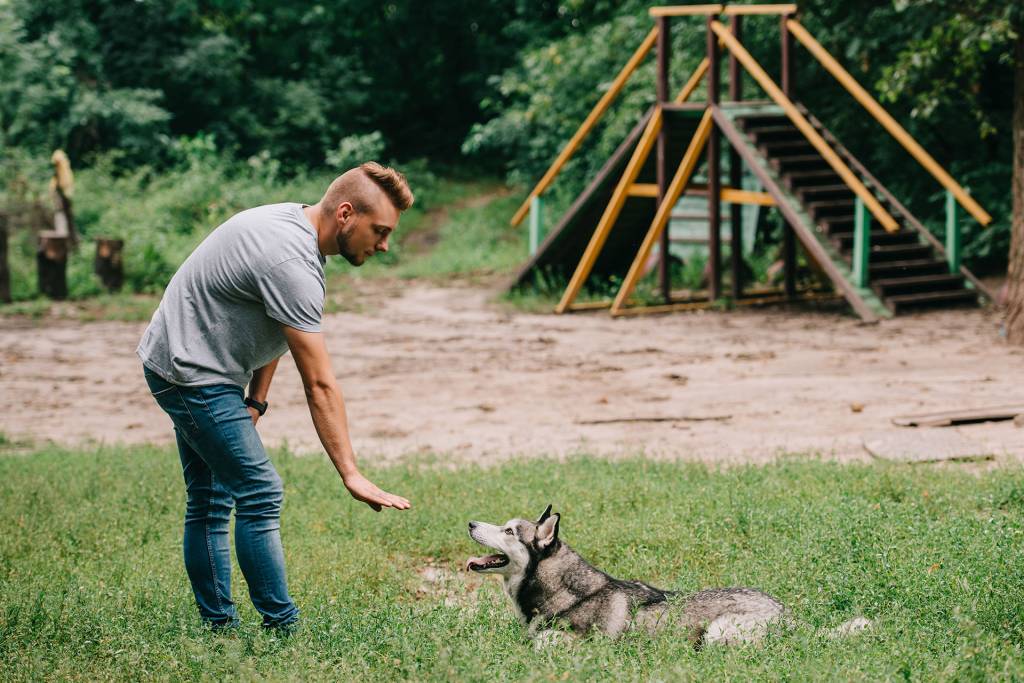
The tone of voice is important when you are training your dog, whether it is for personal security or just for basic obedience commands. Be consistent with your tone of voice when you are training them because they may not respond right away and may send some confusion as to what you are trying to communicate to them. Avoid using a harsher or softer tone when giving commands and stick to the tone of voice you used when you are training them. If you can’t stick to a certain tone, then it is best to familiarize your dog and train them to respond to different tones when being given commands.
Other Things to Consider in Training Your Dog for Personal Security:
- Start training your dog at a young age, so that they are able to easily learn commands and strongly apply them in every situation. This is for the reason that dogs learn faster when they are still young and pick up slowly as they age.
- Not all dogs can be trained for personal security, and will strongly depend on the breed.
- Not all dogs are able to distinguish between a threat situation and a safe situation.
- If your dog is unable to respond to personal security training and easily gets weary when strangers appear, then they are not suitable for that kind of security training.
- Choose a certain time of the day for training. Doing this will help your dog get used to this routine and will help them be more eager to learn things.
- Keep the training sessions short as young dogs get easily distracted and bored.
- Avoid combining words and stick to a single word command or to the words you used during the training process. Instead of saying “just go,” you can say, “go” or “please sit,” you can say, “sit.” Mixing other words that you didn’t use during the training process may confuse your dog and may also cause them to not respond to your commands at all.
- Use a lightweight leash for training because the heavy ones can be distracting for your dog.
The key to being able to train your dog for personal security is to be consistent in doing them at all times and know how to properly interact with them throughout the training process. These are needed in everything you will teach your dog.
We hope that this article has been informative in giving you tips on how to train your dog for personal security.
If you are in need of specialized security services, contact us today and we will be glad to offer you the best of our services!
